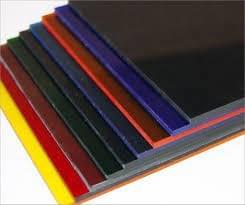Vacuum forming is a form of plastics in which a sheet of plastic can be heated and vacuum applied to molds to create various products Here is an overview of the process

Design and mold making: The process begins with the design of the desired product and the making of a mold or tool. They are usually made of materials such as wood, epoxy, and aluminum, and represent the final stage of the product.
Paper material selection: Select the correct vacuum form plastic sheet paper for the application. Common materials include ABS (acrylonitrile-butadiene-styrene), PETG (polyethylene terephthalate glycol), polystyrene, and PVC (polyvinyl chloride).
Plastic foil heaters: A selection of plastic foil is filtered and wrapped in molds. The paper is then heated with thermal agents until it becomes soft and brittle. Temperature and heating time depend on the type and thickness of the plastic.
Procedure: Once the plastic sheet reaches the proper temperature, the vacuum is activated. The vacuum removes the air between the mold and the hot plastic sheet, so that the sheet is pulled tightly into the shape of the mold and this gives the plastic the desired shape
Vacuum-treated plastic sheets offer many benefits that make them a popular choice for a variety of industries and applications. Here are some of the major advantages of using vacuum forming.
Low cost: Vacuum fabrication is a cost effective option compared to other plastic molding processes such as injection molding or blowmolding Generally, the mechanical costs associated with vacuum fabrication are low, making it a viable option for businesses small and large runs
Rapid sample processing: Vacuum processing allows rapid and relatively inexpensive processing of samples. This is particularly useful in the product design and development phase, allowing manufacturers to test and iterate designs before committing to an expensive delivery option things will go into it
Simple idea: Vacuum construction offers great design flexibility. This can be a variety of simple to complex constructions with varying designs and finishes. The action adjusts to a wide range of shapes and sizes, making it suitable for a variety of applications.
Types: The vacuum industry uses a variety of plastic materials including ABS, PETG, polystyrene, PVC, and more. This allows manufacturers to select materials based on factors such as strength, transparency, chemical resistance, and other specific requirements.
Customization and branding: Products created through vacuum fabrication can easily be customized with different colours, textures and logos. This makes it the perfect choice for labels and accessories.
Speed of Manufacturing: Vacuum fabrication is generally a quick process when compared to some other mold fabrication methods. Once the molds are ready, they can be rapidly molded and cooled, for better processing.

Low installation time: Setting up the vacuum cleaner and equipment is simple and quick. This reduces the amount of time spent working between cycles, making it a viable choice for small batch-only productions.
Reduced waste: Less waste is consumed in the process than other weaving methods. Excess material can often be recycled, reducing environmental impact.
Easy Second Operation: Vacuumed parts are easily cut, drilled, trimmed and finished, with further adjustments and assembly as needed
Low Pressure Requirements: Unlike other molding processes that require high pressure, vacuum forming works at very low pressure, reducing dirty molds and equipment
Equipment changes: Vacuum equipment can be fairly easy to replace or replace, making it possible to make changes to materials without major equipment changes
Overall, vacuum fabrication is a versatile and efficient process that offers many advantages, especially for low-cost implementation, rapid prototyping, design simplicity, and customization are key considerations
Vacuum forming plastic sheets offer various benefits, making this manufacturing process popular and widely used in many industries. Here are some of the key advantages:
Cost-Effectiveness: Vacuum forming is a cost-effective method compared to other plastic forming techniques like injection molding or blow molding. It requires less expensive tooling, and the production setup is generally simpler and quicker, reducing overall production costs.
Versatility: Vacuum forming can be used with a wide range of plastic materials, including ABS, PETG, polystyrene, PVC, and more. This versatility allows manufacturers to choose the appropriate material based on the application's requirements, such as durability, transparency, or rigidity.
Quick Turnaround: The process of vacuum forming is relatively fast and efficient, enabling manufacturers to produce plastic parts quickly. This quick turnaround is beneficial for meeting tight production schedules and addressing urgent manufacturing needs.
Low-Waste Production: Vacuum forming generates minimal waste compared to other molding techniques. The excess plastic (flashing) can be recycled and used for future production, reducing material wastage.
Design Flexibility: Vacuum forming offers design flexibility as it can produce complex shapes, contours, and textures. It allows designers to create custom parts with various features without incurring significant additional costs.
